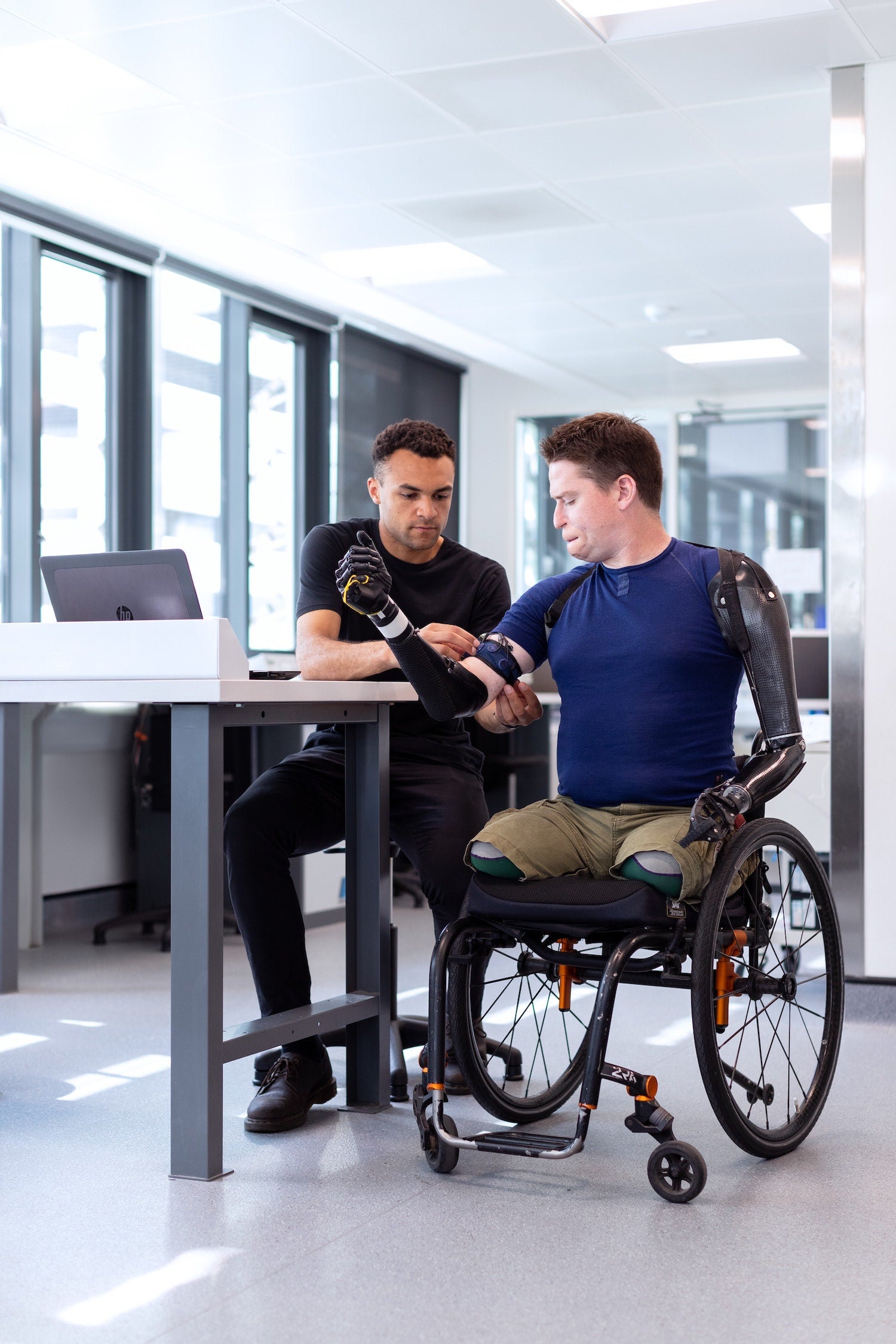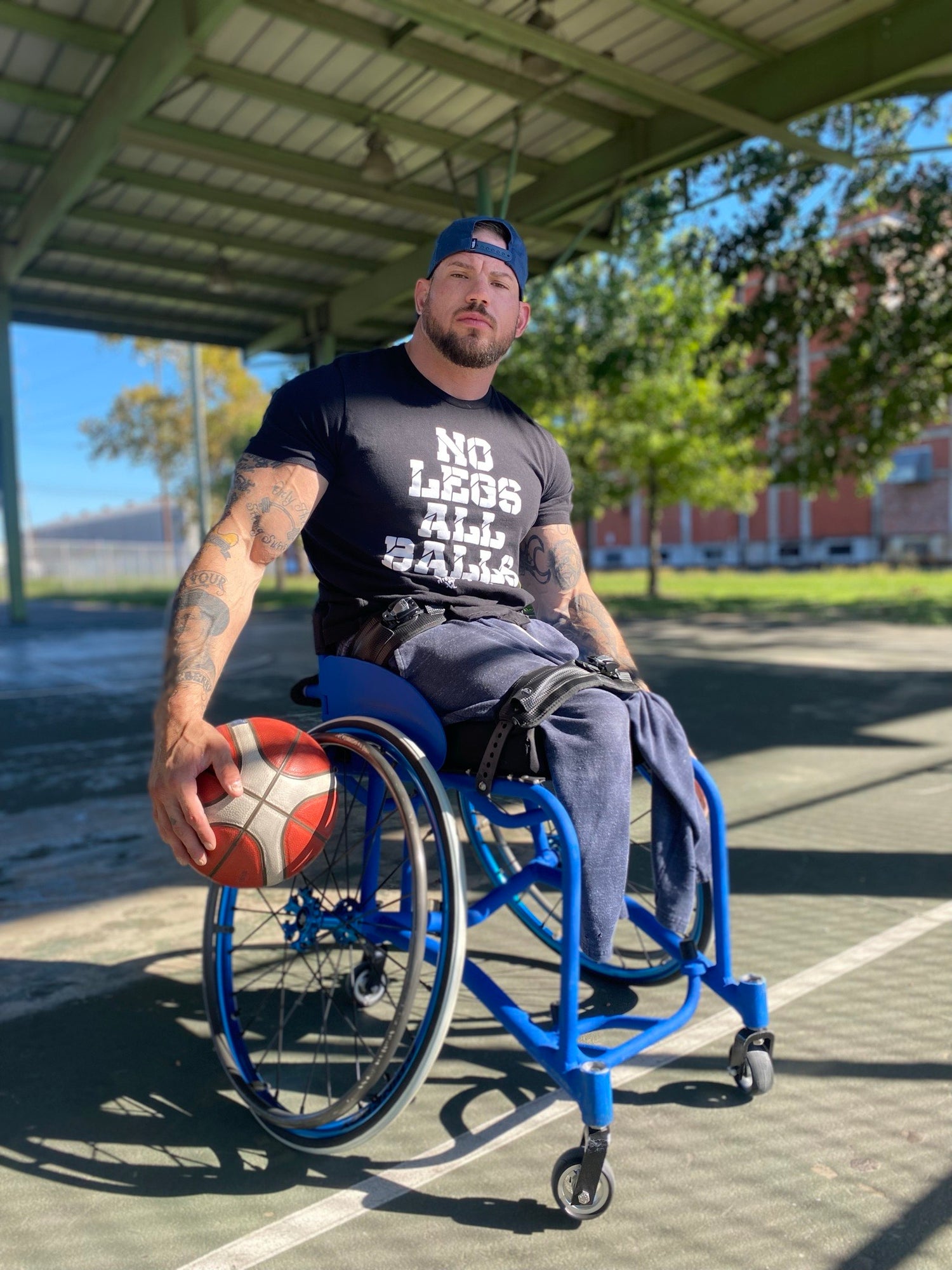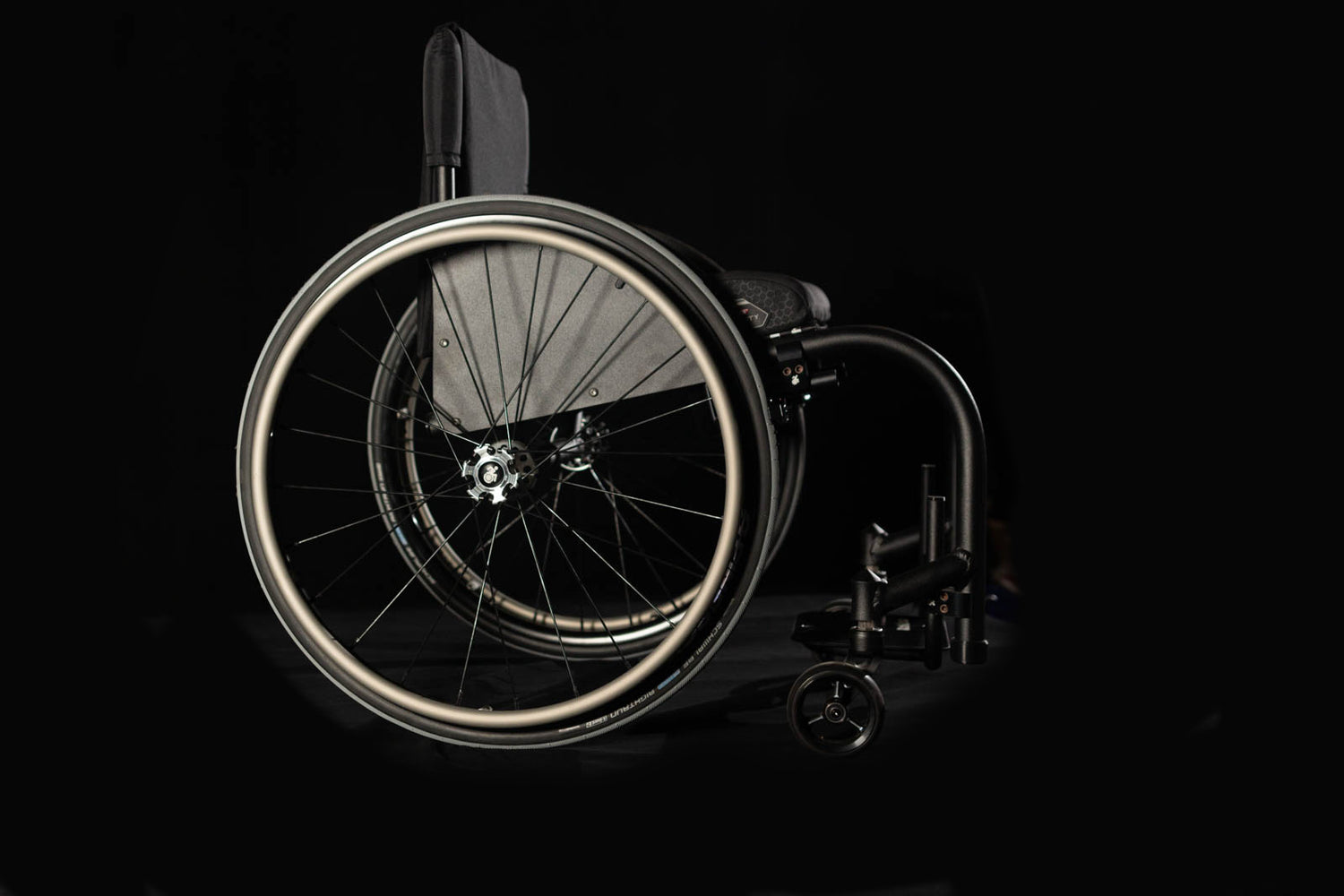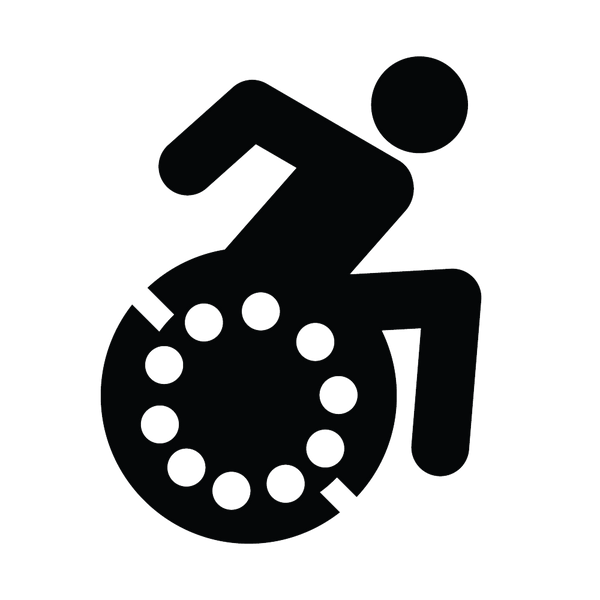3 Types Of Manual Wheelchairs: Hospital, Adjustable, & Rigid
There are three main types of manual wheelchairs: hospital, adjustable, and rigid. The type you need depends on your mobility and how you will be using it.

Hospital Wheelchairs
Hospital wheelchairs are the most common type of manual wheelchair and are used in hospitals and other healthcare facilities. They are mostly used for short-term use, such as for someone recovering from surgery or an injury. These chairs are often made of heavier material that make it difficult to move around independently and are mostly designed for a caregiver to push a patient from point A to point B.
Advantages of Hospital Wheelchairs
- They are cheap to purchase
- The frame folds which is a benefit for the caregiver
- They are readily available from many sources
The downside of Hospital Wheelchairs:
- They are very heavy
- They are cheaply made
- Not very adjustable
- Bad push
- Bad wheel and tire traction
- Bad transfer of power
- Hard to find parts
- Hard to maintain
- Breakdown a lot
Wheelchairs used in hospitals are typically made for short-term use and are relatively inexpensive. However, these chairs tend to prioritize the caregiver rather than the person sitting in the wheelchair. For instance, most transport/hospital wheelchairs are designed with push handles, foldable frames, and cheap wheels with no tread. While these features may benefit the caregiver, they can be quite challenging for the person who is pushing the wheelchair. The push handles may not allow for proper strokes when pushing. Compared to other types of chairs, folding wheelchairs require more energy due to the significant amount of energy lost in the frame instead of being transferred to the wheels. Furthermore, the wheels may not provide sufficient grip when moving outdoors or pushing up/down ramps.

Adjustable Wheelchairs
Adjustable wheelchairs are often used in the hospital too, but they can also be used at home. These chairs have a seat that can be raised or lowered to accommodate different heights of users. They're made of aluminum or steel and have features like folding backrests.
Advantages of Adjustable wheelchairs:
- Can be adjusted to fit many body types and impairments
- Over its life, it can be adjusted to change as your body changes and develops
- Covered by most private insurance/Medicare/Medicaid
- Can be adjusted as body and injury develop so very good for newly injured people
The downside of an Adjustable wheelchair:
- Heavier because of all the adjustable brackets and mounts
- More maintenance because there are more fasteners
- More loose fasteners more noise
- Not always high-quality or long-lasting parts for the pricey

Rigid Wheelchairs (Fixed)
A rigid wheelchair is designed with very little or no adjustability. It is custom-built to match your preferred ride or push style, features a fixed seat and backrest arms tailored to your measurements at the time of construction. However, if you decide to make changes or require adjustments in the future, you will have limited options. We often joke that making adjustments to a Rigid Wheelchair requires a grinder and welding torch, indicating the difficulty of making significant changes to the fit. Opting for an all-welded frame provides greater power transfer, thereby increasing your energy levels for enhanced functionality and by replacing bolted parts with welds, maintenance, weight, and noise are significantly reduced.
If you're looking for a wheelchair that is sturdy and low-maintenance, rigid wheelchairs are a great option. They're built to last and can handle heavy use without falling apart, which is especially useful if you are an active user. Additionally, these chairs are perfect for everyday tasks such as grocery shopping or attending social events, as they provide the necessary durability and support.
Advantages of Rigid wheelchairs:
- This adjustable frame is lighter than its comparable counterparts.
- Requires much less maintenance.
- There is significantly less noise.
- Is a significant improvement to push quality and energy transfer
The downside of a Rigid wheelchair:
- Very few adjustments can be made
- This chair is not suitable for entry-level users who do not know what they want or how they want to live
- To ensure the construction of the perfect chair, it's important to have a clear idea of how you want the chair to be designed.

Conclusion
Choosing the appropriate wheelchair requires assessing your current injury or impairment progression. It is crucial to determine how you intend to utilize your new wheelchair for maneuvering inside your home, traveling around your locality, and pursuing your desired activities. If you have questions or need help understanding your options contact us, we would love to talk about how you want to live and what tools would work best for you.
